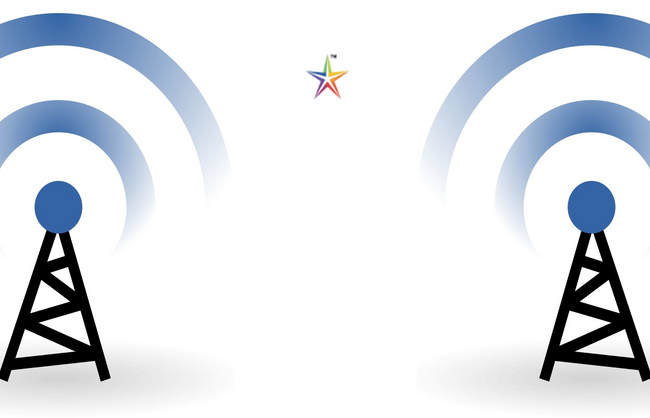Bosch Reveals X-Spect Scanner, Allowing You to Look Into Your Food and Fabric

If you track your gluten intake, you probably already know about the Nima Portable Food Sensor. It works to measure gluten amounts in your food when you place a sample of your meal into its testing canister. Bosch’s X-Spect scanner is a similar tool; you can measure your food’s freshness in addition to recognizing cloth type. It will even detect a stain on your clothes and instruct your washing machine on how to remove it. If your food is rotten, the scanner will tell you.

Scanning a Spectrum
The scanner detects foods, stains, and fabrics, and then offers advice on what to do with them. Dr. Arndt von Bieren is head of sensor and food technologies at BSH, the corporate parent of appliance manufacturer Bosch. Dr. von Bieren says, “The goal behind it is that it helps users with everyday decisions.”
It’s easy to switch modes on the scanner; right now, the X-Spect can determine a maximum of two component materials in a fabric. However, it will let you know those two component’s relative proportions. For example, a blended cotton-poly t-shirt may give the X-Spect scanner some issues. The inventors hope to up the component maximum to three different fabrics detected, but it’s not ready for that yet.
The scanner reads four different types of stains: chocolate and lipstick, among others. The inventors want to bump this number up to 16, but the product is a work-in-progress. 16 stains would match up with the Bosch washing machine presets for stain-cleaning.
Food-wise, the scanner can measure the nutritional content of the food and detect the ripeness of more raw foods, like fruits and veggies.

Is it Accurate, Though?
The scanner comes with two optical sensors, which send data to a cloud database. Using this data, the scanner determines the blend of your fabric, the freshness of that raw chicken, or the source of a long-forgotten stain. On one demonstration, the X-Spect scanner couldn’t tell the difference between cotton and linen because of their closeness in molecular structure.
The X-Spect scanner knew the difference between a lipstick stain and a red wine stain, so that’s a positive result. It also knew that a peach was a few days away from peak ripeness. An impressive aspect of the scanner is that it recommends a recipe for maximum flavor after measuring the composition and water content of a cut of meat.
Dr. von Bieren spearheaded the development of the X-Spect concept. He says it took just five months. Dr. von Bieren describes the core technology as ultimately connecting to a smart Bosch appliance. He says the technology is similar to the SCiO scanner from Israeli-based firm Consumer Physics. But, he says, a key difference is the cloud processing feature and the ability to share the data with other devices.
Like the SCiO technology, X-Spect can only read the ingredients of homogenous food items — like an apple, not a slice of cake. This means items like chicken or fruit are okay. However, to measure your sandwich, you’ll have to take it apart and scan each ingredient individually.

A Smart Scanner for a Smart Home
Some of the scanner’s features are a little unnecessary; for example, you can google the caloric value of raw food faster than the X-Spect can retrieve that information from its cloud-based database. But Dr. von Bieren sees the scanner as a vital connection between human and machine. Paired with a smart Bosch washing machine, it can tell you which clothes are safe to wash together. The scanner will also work with a smart Bosch dryer to create a custom drying cycle minimizing wear and tear on your clothes.
The X-Spect scanner is about the size of a handheld infrared thermometer, maybe a little bit wider than a thermometer. Press it against a piece of fabric or a stain, and let it start working its magic.

Other applications for this technology include building it into refrigerators to intelligently scan their contents for inventory, recipe recommendation, and monitoring freshness of raw fruits and veggies. You can even use it in your oven to monitor your roast pork as it cooks. The scanner uses molecule-scanning technology to analyze food and textiles. Bosch representatives didn’t specify all potential uses of the handheld device, but connecting to the Internet seems to be key.

When to X-Spect it on the Market
Because Bosch is still in the prototype stage with the X-Spect, Dr. von Bieren says the X-Spect used in trade shows was, indeed, a working prototype. “It’s not a fake. The cloud back-end works,” he says. He was more silent on the topic of when it would begin manufacturing and how much it might cost.
Similar scanners exist, but none offer scanning for clothing and food. Most scanners are dedicated to one of those topics only, and for good reason. It is difficult enough as it is to figure out the composition of food without involving fabric in the equation.
Dr. von Bieren says that Bosch is developing the X-Spect entirely in-house. The company plans to beef up the database with more information about fabrics and foods, as well as determining other use cases. You may want this scanner more if you are allergic to certain types of foods and fabrics.
Sources: CNET, Reviewed.com, Food and Wine





